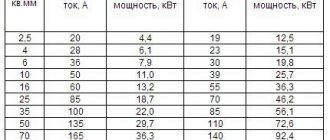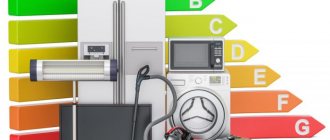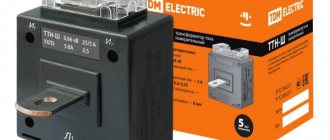What do we mean by energy saving?
Energy saving is the rational use of energy.
Of course, the technical reconstruction of industrial installations and heating mains, the introduction of new technologies, the utilization of thermal energy, and the use of renewable energy sources require enormous costs. But the long-term practice of European countries convinces us that by reviewing our habits and behavior in our daily lives, we can significantly reduce the need for energy. And this does not at all mean a deterioration in living standards or a renunciation of comfort. Of all the energy consumed in everyday life, the lion's share - 79% goes for space heating, 15% of energy is spent on thermal processes (heating water, cooking, etc.), 5% of energy is consumed by electrical household appliances and 1% of energy is spent on lighting , radio and television equipment.
What is included in energy saving of residential buildings?
Before you start using it, you need to understand what is included in energy saving. On the technical side, this is a set of rational measures to reduce energy consumption in all possible areas without reducing the efficiency of consumers. An accessible example is replacing a conventional incandescent light bulb in a chandelier with an LED one. With the same brightness, consumption will decrease by 10 times!
Moreover, if the lamp is equipped with a smart sensor that responds to movement and the level of natural light, the savings will be even greater. It will be turned on only when a person enters the sensor’s coverage area and during the period of twilight and darkness - from evening to morning.
Common ways to save energy at home:
- Transition to energy-saving lighting sources.
- Installation of energy efficient household appliances.
- Increasing the efficiency of electric heating boilers.
- Monitoring the functioning of air conditioners and fans.
- Setting up a special economy mode on computer equipment, video cameras, and communication devices.
- Installation of a natural shading and lighting system.
- Equipping lamps with smart sensors.
- Application of economical electric drives.
- Connecting the heating system to a smart thermostat (applicable to private houses and apartments, if they are equipped with one).
The correct organization of energy saving is based not so much on the installation of new devices, but on the connection and integration of already installed equipment into a single intelligent control system. A “smart home” ensures the rational use of energy resources and allows you to save money even when equipping rooms with standard electrical appliances, for example, through smart switches.
The benefits of innovating today
Energy saving in the home using smart technologies has the following number of advantages:
- Energy savings of up to 50% on lighting, 15% on heating and up to 10% on cooling systems.
- Selection of optimal indoor climate conditions for a comfortable stay.
- Settings, control and monitoring remotely - via the Internet or Wi-Fi.
- Compatibility of many devices into one system.
- Full control over all devices.
- Compliance with fire, security and electrical safety standards.
Smart energy saving systems allow you to save up to 50% on heating. This is especially true for regions with a long heating season. Thanks to special sensors, they easily adapt to weather changes and distribute heat throughout the house depending on the wind, temperature, sunlight, and the presence or absence of people in the room.
Features for a private home
Home energy saving measures are aimed at four main sectors:
- Heating.
- Ventilation.
- Appliances.
- Lighting.
Today, smart technologies make it possible to equip almost all household appliances with tracking sensors - from microwave ovens to heating boilers:
- Kitchen appliances are turned on at a certain time so that dinner is ready when the hosts arrive.
- In the morning, the coffee machine makes a drink right when you wake up.
- The sensors on the lamps turn on only when movement occurs in their detection zone.
- Thermostats automatically measure temperature and set the operating rhythm of the boiler or heater.
However, almost all of them have nothing to do with energy saving. However, they are capable of monitoring energy consumption. All of them can be combined into one smart system using special sensors. Today, for example, smart thermostats are being widely adopted. In addition, some manufacturers of climate control equipment equip their products with them as standard.
The task of a thermal detector is to collect and analyze information, and then adjust the operation of the device to the rhythm of the owners. The thermostat automatically turns on the heating or air conditioning system when the home owners arrive. For example, while no one is in the house or its separate room, the temperature there is not regulated, but some time before arrival, heating or cooling begins.
The device is easily combined with other sensors. With its help, it is easy to set the wake-up mode based on temperature: while a person sleeps, the air is cool, and by the time he wakes up, it becomes warmer. In addition, its software allows you to select climate templates, as well as install them yourself.
At the same time, the software is constantly updated via the Internet. They can show weather, geographic data, reports and many other useful information. Connection to climate control equipment is carried out via wireless communication - Wi-Fi, Z-Wave and other formats. Smart thermal sensors can also communicate with a smartphone through a special application.
One of the devices that is useful in terms of energy saving in a smart home is smart switches. With their help, you can connect not only lamps, but also all electrical appliances in a private home. When necessary, you can view information about energy consumption through the application on your smartphone, as well as turn off and turn on devices. Very useful for country homeowners in these devices is the “turn everything off” function.
What can be implemented in the apartment
Although in a modern residential complex no electricity is spent on heating, since a centralized heating system is used, the introduction of efficient energy saving is also possible. The main expense item is related to lighting and electrical appliances. Using smart sensors can save you up to half of your monthly bills.
Energy saving in apartment buildings mainly comes down to the following measures:
- Replacing standard power-consuming devices with energy-efficient ones (kitchen appliances, washing machines, etc.).
- Installation of energy-saving lamps.
- Switching audio and video devices, computers and gadgets to a mode with minimal energy consumption.
- Equipping luminaires with motion and light sensors.
In addition, often many apartments use climate control equipment - heaters, air conditioners, boilers, etc. They also need to be switched to energy efficient operation mode. The easiest way to do this is by connecting devices to the smart home system using special sensors.
Smart equipment programs the operation of devices in accordance with the preferences and rhythm of life of the owners. For example, the light in any room will only be on when there are people present. Another example is the programmed activation of an air conditioner. When there is no one in the apartment, there is no need to use climate controls. However, when the owners are on their way home, it becomes more active and prepares the atmosphere of the home for the moment of their arrival.
You can control, configure and simply monitor the appliances in your apartment remotely. By connecting them with gadgets through software applications via the Internet, you can remotely see the status and energy consumption of home appliances and set the appropriate operating rhythm for them.
Energy saving opportunities for housing and communal services
According to statistics, almost three quarters of energy consumption in the city comes from the public sector. Proper implementation of an energy saving program for residential buildings can reduce this figure by at least half. The main activities in this industry are as follows:
- Installation of anti-vandal energy-saving lamps on the street, in entrances, and crowded places.
- Equipping public premises with energy-efficient climate control equipment.
- Supply of sensors for monitoring and accounting of utility networks (water, gas, heat, light).
- Lighting systems are equipped with motion and light sensors and smart switches.
Management, control, configuration and monitoring of all utility systems is best entrusted to smart equipment. Modern technologies, through special sensors, make it possible to analyze data from each specific object, summarize it and automatically take appropriate actions.
This approach allows, for example, to avoid overloading electrical networks, failure and damage to transformers. The system will independently monitor the state of a particular area and manage energy flows. While devices need to be connected in one place, they can be disconnected in another place where there is no need to operate them.
This is clearly visible in the lighting of entrances at night. As long as no one enters or exits, there is no need for backlighting, and when someone appears, the light turns on automatically and then goes out after some time. In this way, it is possible to save both the life of the lamp and the electricity consumed.
Energy accounting
The laws of the Republic of Belarus “On Energy Saving” provide for the mandatory accounting of energy resources received by individuals and legal entities. Work in this direction is ongoing and is constantly growing. So in all new houses, metering devices are installed during construction, but in the old housing stock we will have to do this ourselves.
This will allow:
- pay only for the amount of energy that you received
- refuse to pay for low quality energy resources
- effectively save on energy resources
Installing energy meters is an expensive undertaking, but its payback in some cases is quite good.
1.1. Energy saving concept
Energy saving is the implementation of measures aimed at reducing the volume of energy resources used, such as electricity, heat, water, gas while maintaining the corresponding beneficial effect from their use.
Energy saving has become one of the priority tasks of humans due to the shortage of basic energy resources, the increasing cost of their production, as well as due to global environmental problems.
The problem of energy saving in everyday life is associated with the cultivation of an appropriate mentality among the population. Without a conscious understanding by the citizens of our country of the need to save energy consumption in everyday life, to comply with energy saving regimes, success will not be achieved.
Therefore, the main principle of a modern home is energy saving.
In the countries of the European Union, wasteful consumption of water, gas, electricity and heat energy in everyday life is not only an expensive “pleasure”, but also a sign of bad manners, “bad form”.
The long-term practice of European countries convinces us that by reviewing our habits and behavior in our daily lives, we can significantly reduce the need for energy resources. And this does not at all mean a deterioration in living standards or a renunciation of comfort.
Of all the energy consumed in everyday life, 79% is used for space heating, 15% is used for thermal processes (water heating, cooking, etc.), 5% of energy is consumed by electrical household appliances and 1% of energy is spent on lighting, radio and television equipment. The numbers are average and largely depend on the specific living conditions.
The most difficult problem in saving energy resources is to start with ourselves, by cultivating the habit of being careful with the energy that we consume daily for household needs.
All of humanity and each individual should save energy.
Human energy consumption is constantly growing. The difference between Stone Age man and modern man is enormous, especially in the use of energy.
The caveman consumed about 1% of the amount of energy that a modern inhabitant of the Earth consumes.
Just 40 years ago, humanity consumed only half the energy it consumes today.
Energy Saving
On the one hand, saving on electricity is the easiest way; in most cases, there is instrument metering, and the measures taken have an immediate economic effect. On the other hand, it is the most difficult, because there are no measures that allow you to immediately get big savings. Therefore, saving energy is a delicate, painstaking and constant work. Electricity in everyday life accounts for 9-10% of all necessary energy. And although the possibilities for energy saving when using household electrical appliances (compared to heating and hot water) are limited, you can see from the bills you pay that this type of energy is relatively expensive. When purchasing household electrical appliances, pay attention to energy consumption, compare different models and manufacturers. In a family of 4 people, 1/5 of electricity goes to caring for things and clothes. Using modern technology and changing our habits will save up to 40% of electricity.
Main directions of energy saving in everyday life
Depending on climatic conditions, type and size of home, heating systems, and gas availability, specific measures aimed at saving resources may vary. But the main directions for increasing energy efficiency in everyday life are:
- Heat saving. Insulation of walls, ceilings and basements. Replacing windows and doors with new metal-plastic ones or sealing old ones, sealing cracks and holes. Installing aluminum foil or a heat-reflecting screen behind the radiator. Replacing cast iron radiators with bimetallic or aluminum ones. Glazing of loggia and balcony. All measures taken together will help increase the room temperature by 4-5 degrees without increasing energy consumption.
- Saving water. Installation of a water consumption meter. Replacing rotary taps on mixers with lever switches. Checking and repairing the flush tank in the toilet, installing a two-button tank. Take baths less often and shower more. Do not turn on the water at full blast unless absolutely necessary. Close the tap when shaving and brushing your teeth. Use the dishwasher and washing machine with a relatively full load. In general, you can achieve a reduction in water consumption by 3-4 times.
- Saving gas. With individual gas heating, all measures aimed at preserving heat and hot water automatically lead to gas savings. When preparing food, it is rational to use modern stainless steel cookware with a polished bottom. All utensils must be clean and level and match the size of the burner. Check that the oven door is tightly sealed so that hot air does not escape. The prospect of reducing costs is 2-3 times.
Energy saving when using lighting
There should be a lot of light in the house, it has a beneficial effect on health, and in general it becomes warm and comfortable. However, very bright light is irritating, so it is most effective to use local, spot lighting. Now there are a lot of different chandeliers, floor lamps, sconces and lamps on sale. You can choose according to your taste, interior and wallet. Use the appropriate type of lighting: In the workplace (whether at a desk or a kitchen table), it is good to use LD fluorescent lamps with soft light. If this is a desk at which you, and especially your child, spend a lot of time, it is advisable that this lamp be equipped with high-frequency electronic ballasts. In the hallway and kitchen, where the light is sometimes on around the clock, it is advisable to use compact fluorescent lamps. They are more expensive than regular lamps, but if you are not used to turning off the lights behind you, they will pay for themselves quickly. Moreover, they have a large luminous flux, so they can successfully replace overly powerful incandescent lamps.
The use of advanced lighting technology (energy-saving lamps, lighting systems) allows saving up to 60% of electricity. The condition for economical use of lighting is planning to match the lighting needs and the installed lighting equipment. A multi-lamp chandelier on the ceiling provides illumination of the entire room, but leads to unwanted shadow formation when working at a desk, a sewing machine, or in a corner with toys. Targeted lighting, despite the lower power of the lamps, will provide better illumination without unwanted shadows.
The more often you turn off conventional incandescent lamps, the faster they burn out. It is economical to turn off a regular incandescent lamp only if you do not need light for 10 minutes. Making a new lamp requires more energy than you save by turning it off frequently for short periods of time. It is important to understand saving energy resources not as a renunciation of comfort, but on the contrary - the goals of energy saving (including government ones) are to ensure the necessary living conditions for the entire population.
Project "Energy Saving at Home"
Voltage is applied to the electrodes. The starting current flows through the filaments.
This leads to the appearance of a “glow discharge in the gas”. In this case, the gas begins to emit invisible ultraviolet radiation. The phosphor converts this radiation into visible light. A warmer or cooler shade of light is determined by the type of phosphor.
How to save energy at home - you can find many answers, tips and recommendations to this question online. It's also important to remember that reducing your electricity consumption not only has a positive impact on your wallet, but also makes a difference on a larger scale.
Children and parents were presented with memorable gifts in the form of a booklet containing
tips for saving energy (
Appendix 5).
When using lighting in the home
Turn on the light when you need it;
use light bulbs of different wattages depending on your needs;
when painting rooms, use light colors of paint (a light wall reflects almost 85% of the incident light);
give preference to purchasing energy-saving light bulbs;
Wipe light bulbs and lampshades more often (if they are dirty, the illumination in the apartment may decrease by 10-15%).
When using a washing machine
sort clothes by level of soiling and choose a shorter washing program, the result of which suits you;
set the washing machine to the lowest temperature possible (washing at 90°C uses three times more energy than washing at 40°C);
use the drying mode only when necessary;
wash with a full load (washing with a partial load will cost you more water, detergent and energy).
When using the refrigerator
do not open the refrigerator door unless necessary;
do not put warm, much less hot, foods in the refrigerator;
install the refrigerator away from heating devices and away from direct sunlight;
periodically remove dust from the back of the refrigerator;
check how tightly the refrigerator doors close;
Don't forget to turn off the refrigerator when you leave the apartment for several days.
When using a computer TV.
Turn on the TV or computer only when you are watching or working on it.
III . Conclusion
From all the presented results of the work, I conclude that the students of our school and their parents do not have a sufficient level of knowledge about the problem of energy saving, and therefore cannot yet apply it in practice.
Electricity is wasted if appliances are plugged in but not in use, or if appliances are in standby mode. Incandescent lamps become ineffective in use. Comparing the parameters characterizing the operation of two types of lamps, we see that it is better to use fluorescent lamps. Their price is higher, but it pays off within a year. But in Russia the issue of their disposal has not yet been resolved, which is a huge disadvantage.
Energy saving at home
Energy saving, tips
Practical ways to save energy at home that do not require large investments and are obtained experimentally!
Due to the constant increase in electricity tariffs, the ability to limit the cost of paying for it is becoming increasingly important. This can be done in many ways. The most fashionable ways to save energy in everyday life are those that are associated with new technologies; quite a lot has been written about them. There are, however, opportunities that do not require large expenses and special knowledge; they will help you if you follow the basic rules of energy consumption culture.
Let's consider these possibilities in detail:
Energy saving when lighting public areas
Usually, when considering this issue, they suggest installing motion sensors and energy-saving lamps on landings and in basements. In this case, the price of the issue, together with installation costs, can reach several thousand and even tens of thousands of rubles per entrance.
A simple way is that you place a semiconductor diode (300V, 3A) in the gap of the wire that turns on the lighting in the entrance or basement. The whole job takes 5 minutes. The diode is sized (eg 1N5404) to fit inside the switch housing. Its cost does not exceed 300 rubles. The diode passes only one half-wave of the mains voltage. As the voltage on incandescent lamps decreases, the power they consume decreases and their service life increases sharply. The author himself witnessed the service of an incandescent lamp, after such correction, for 7 years.
Saving energy in the kitchen
If you use an electric kettle, it is not at all necessary to fill it to the brim before boiling. Pour as much as you need now. Household members will still put it on to warm up again. Once again, you will experience additional energy consumption. The kettle's power is usually 1.5-2 kW. This is a significant contribution to monthly electricity consumption.
If you use an electric stove, then you should know that when choosing cookware that does not match the size of the stove, 5-10 percent of energy is lost; cookware with a curved bottom “steals” up to 40-60 percent. So, the bottom of the pan should be smooth and of a size corresponding to the diameter of the burner. Remember that the rapid evaporation of water during boiling increases cooking time by 30 percent. After the liquid boils, you need to reduce the power supplied to the burner.
Saving energy when washing
Read the instructions for handling household appliances. Not all machines choose the optimal amount of water when partially loaded. The more water and the higher the washing temperature, the more energy the machine will use. If the machine is not fully loaded, it will overuse up to 15 percent of energy, and if the washing program is incorrect, up to 30 percent.
Energy-saving lighting fixtures in the apartment
Usually in apartments with long corridors and in kitchens the lights are constantly on. In such rooms, first of all, it is worth replacing incandescent lamps with energy-saving ones. These lamps have a minimum one year warranty. During this time, they will fully pay for themselves and even provide budget savings. A 14 W lamp is approximately equivalent to a 60 W incandescent lamp. Just choose lamps from a well-known company.
A significant reduction in energy consumption will result from the use of light-colored wallpaper and ceilings, transparent light curtains, and a moderate amount of furniture and flowers in the room. Natural light should never be neglected.
Saving energy when using a refrigerator
If you buy new household appliances, then choose them from category A. These appliances, even at the design stage, are designed to be energy-saving. If we talk about refrigerators, then they should be installed in the most shaded and coolest place in the apartment. If you have a two-compressor refrigerator and you are not using one of the refrigerator compartments, turn off its compressor. Usually the refrigerator's automation allows this.
Saving energy when ironing clothes
Try not to over-dry the laundry, because... ironing it will require a hotter iron and more time to achieve the desired result. Another "trick" to reduce costs is to use aluminum foil, which is placed under the fabric covering the ironing board. The foil prevents thermal energy from dissipating and concentrates it in the fabric being ironed.
Saving energy when cleaning an apartment
When using a vacuum cleaner, throw out debris from the collection container more often, wash or change the filters for incoming and outgoing air. Additional aerodynamic resistance leads to overheating of the vacuum cleaner motor and a sharp increase in energy consumption. For example, when the dust collection container is filled to 30%, energy consumption increases by 40-50%.
Energy saving when turning off the standby mode of consumer electronics
Few people think that the standby mode of household appliances is a hole in your pocket through which your money leaks. For example, a TV with a diagonal of 54 cm “eats” 9 kW in standby mode, a music center 8 kW, a video player 4 kW, etc. Count your household appliances, why do they need standby mode? Is it really that difficult to press the on/off button? There is one more aspect: they are constantly connected to the power grid and if it fails, you can lose everything. Such cases have happened.
Energy saving when unplugging cell phone chargers
Of course, the losses from the fact that these devices are constantly plugged into an outlet are not as great as from other household appliances. However, “chargers” are switching power sources; such devices “do not like” to work without load. When a cell phone, player, laptop, etc. is not connected to them. Such devices overheat, fail and can lead to fire!
Computer Internet, etc.
If you are not using a computer, for example, you have gone to work or school, it is prudent to turn off expensive equipment. This will extend the life of the equipment and reduce the energy consumption of the apartment. In addition, certainly no one will be able to steal your data and work in your absence, because the computer will be de-energized.
Energy saving at home: simple but effective ways
As energy consumption practice shows, savings through reasonable self-restraint can amount to significant amounts. Anyone who has learned to save electricity, water, heat, and gas in their apartment better understands the need for energy conservation in an apartment building and at work. Let's take a closer look at some simple but effective ways to save energy at home.
Heat saving.
Insulating window and door units allows you to increase the temperature in apartments and houses by 4–5 °C and eliminate the need for an electric heater, which consumes up to 4000 kWh per season. There are several simple ways to insulate:
- sealing cracks in window frames and doorways. For this purpose, mounting foams, self-expanding sealing tapes, silicone and acrylic sealants, etc. are used. The result is an increase in air temperature in the room by 1–2 °C;
- sealing the sill of windows and doors using various self-adhesive seals and gaskets. Windows are sealed not only around the perimeter, but also between the frames. The result is an increase in indoor temperature by 1–3 °C;
- installation of new plastic or wooden windows with multi-chamber double-glazed windows, glass with heat-reflecting film and ventilators. Then the temperature in the room will be stable both in winter and summer, the air will be fresh, and there will be no need to periodically open the window, throwing out a large volume of warm air. The result is an increase in room temperature by 2–5 °C and a decrease in street noise levels;
- installation of a second door at the entrance to the apartment (house). The result is an increase in room temperature by 1–2 °C, a decrease in the level of external noise and gas pollution;
- installing a heat-reflecting screen (or aluminum foil) on the wall behind the heating radiator. The result is an increase in room temperature by 1 °C. Try not to cover radiators with thick curtains, screens, or furniture - the heat will be distributed more efficiently in the room. Replace cast iron radiators with aluminum ones: their heat transfer is 40–50% higher. If radiators are installed with ease of removal in mind, it is possible to wash them regularly, which also helps to increase heat transfer. Glazing a balcony or loggia is equivalent to installing an additional window. This creates a thermal buffer with an intermediate temperature 10°C higher than outside in severe frost. It is not uncommon when the problem is not with a lack of heat, but with its excess. The solution would be to install thermostats on radiators.
Saving electrical energy
Replace conventional incandescent bulbs with LED bulbs. Their service life is 20 times longer than an incandescent lamp, consumption is 8 times lower. During operation, the light bulb pays for itself 8–10 times. Use local lamps when there is no need for general lighting. Make it a rule to turn off the lights when leaving the room. Turn off devices that remain in standby mode for long periods of time. Televisions, computers, and stereo systems consume energy from 3 to 10 Wh in standby mode. Over the course of a year, this equipment, including chargers left in sockets, will provide an additional energy consumption of 200–300 kWh. Use appliances of at least energy efficiency class A. Additional energy consumption for household appliances of outdated designs is approximately 50%. Do not install the refrigerator next to a gas stove or radiator. This increases the energy consumption of the refrigerator by 20–30%. The refrigerator seal must be clean and fit tightly to the body and door. Even a small gap in the seal increases energy consumption by 20–30%. Cool foods to room temperature before placing them in the refrigerator. Don't forget to defrost your refrigerator more often. Do not cover the refrigerator radiator, leave a gap between the wall of the room and the back wall of the refrigerator so that it can cool freely. If you have an electric stove in your kitchen, make sure that its burners are not deformed and fit tightly to the bottom of the heated pan. This will eliminate unnecessary heat and electricity consumption. Do not turn on the stove in advance and turn it off a little earlier than necessary for cooking. Boil as much water in an electric kettle as needed. Use light colors when decorating the walls of your apartment. Light walls, light curtains, clean windows, a reasonable number of colors reduce lighting costs by 10–15%. Record your electricity meter readings and analyze how you can reduce your electricity consumption. Turn off or put your computer into sleep mode unless you need to use it constantly. With continuous round-the-clock operation, the computer consumes 70–120 kWh per month. If continuous work is required, it is more effective to use a laptop or computer with reduced power consumption. In general, it is quite possible to reduce energy consumption by 40–50% without reducing the quality of life or compromising habits. Saving water Be sure to install water meters. This will motivate you to reduce water consumption. Install lever switches on faucets instead of rotary faucets. Water savings will be 10–15% plus ease of temperature selection. Do not turn on the water at full pressure. In 90% of cases, a small jet is sufficient, and water consumption is reduced by 4–5 times. When washing and showering, turn off the water when it is not needed. Taking a shower uses 10–20 times less water than taking a bath. Significant water savings occur when using two-button flush tanks. It is necessary to carefully check for water leakage from the cistern, which occurs due to old fittings. Replacing fittings is not too expensive, and the water savings are significant. Through a thin stream of leakage, you can lose several cubic meters of water per month. In general, reducing water consumption by 4 times is a completely feasible and low-cost task.
Gas saving
Saving gas is primarily relevant if apartments have gas meters installed and there are individual heating points. In this case, all measures to save heat and hot water lead to gas savings. There are also ways to save gas when cooking:
- the burner flame should not go beyond the bottom of the pot, frying pan, kettle, otherwise you are simply heating the air in the apartment (saving 50% or more);
- the deformed bottom of the cookware leads to excess gas consumption of up to 50%; • the dishes in which food is cooked must be clean and not burnt. Dirty cookware requires 4–6 times more cooking gas;
- use economical cookware; these qualities are usually indicated by its manufacturer. The most energy-efficient products are made from stainless steel with a polished bottom, especially with a layer of copper or aluminum. Aluminum, enameled, Teflon-coated cookware is uneconomical;
- The oven door should fit snugly against the stove body and not let out hot air. In general, simply using gas economically will reduce its consumption by 2 times, and using the proposed measures will reduce it by about 3 times.
Energy efficiency is an axiom for modern society. The economical use of heat, electricity, water, and gas allows you to reduce your own costs and improve the environmental situation on the planet as a whole.
2.1. Ways to save energy at home
The simplest methods of energy saving are available to everyone and can be used virtually everywhere in everyday life. More complex energy saving methods, such as planning houses to capture solar heat, reconstructing old heating systems, and using the latest energy-efficient equipment in industry should become a constant concern of the state, business owners or local administrations.
The effectiveness of energy saving measures can be easily checked at home. To do this, you just need to use the most accessible energy saving methods. For example, turn off the lights when leaving the room, do not leave office equipment in standby mode, fully load the washing machine, etc.









